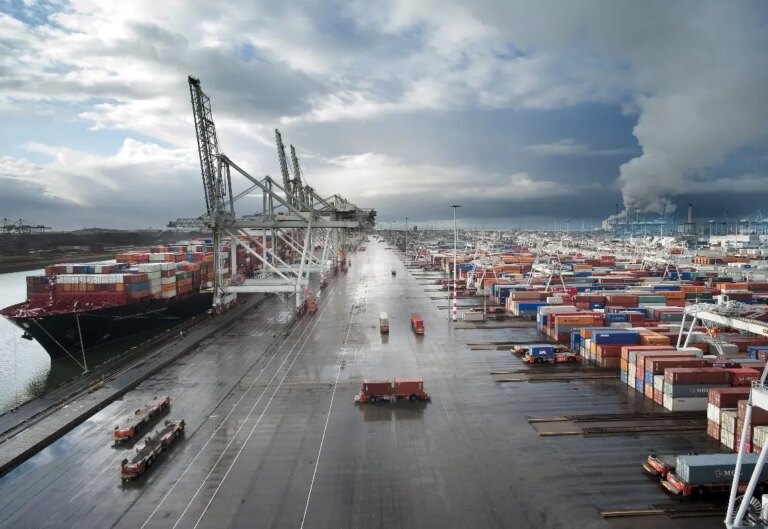Smart ports are currently the easiest locations to install private 5G networks, as outdoor communication and mobility are the main benefits at this stage of 5G technology’s development. This is because shipping terminals have large outdoor spaces where potentially automated machines and vehicles move around, and there is a lot of data that can be used to optimize traffic systems or respond to weather systems.
In fact, without much research, this little bit of work could have produced a list at least twice as long. With the help of a research note from SNS Telecom & IT, I compiled a curated list of high-profile private 5G projects in ports and other locations around the world. Using one European entry as a starting point, I did a quick search through the RCR Wireless archives to put together a handy overview of five in Europe.
Just in case you’re interested, SNS Telecom & IT has already searched the web and listed a long list of global references, including: “Hutchison Ports, PSA International, APM Terminals (Maersk), COSCO Shipping Ports, CMPort (China Merchants Port Holdings), SIPG (Shanghai International Port Group), Ningbo-Zhoushan Port Group, Tianjin Port Group, Zhuhai Port Group, Shandong Port Group, EUROGATE, VPA (Virginia Port Authority), Barcelona Port Authority, Port of Tyne, ABP (Associated British Ports).”
Many are listed below and elsewhere on the RCR Wireless website. In the meantime, here is a quick look at five key 4G/5G port projects in Europe, with more in the US and Asia likely to be added in the future.
1 | Port of Tyne, UK
The Port of Tyne has deployed a private 4G/5G network across the port’s southern cargo terminal and industrial area in South Shields in the northeast of England. The project is managed by UK telecommunications operator BT, which is providing local tranches of licensed b7 (2.6 GHz) and n77 (3.7 GHz) spectrum for exclusive management of 4G (LTE) and 5G applications by the port authority and its customers. Network vendor Ericsson is supplying the dual private 4G/5G core and radio (RAN) network. The setup is described as the UK’s first “site-wide private network deployment for smart port applications.” Read more here.
2 | East and West Gate Terminals, Hungary
The Intermodal East-West Gate (EWG) Transport Terminal, a brand new 85-hectare container terminal opening in 2022 near the Hungarian-Ukrainian border, was built to load Ukrainian agricultural products, especially trucks and trailers loaded with rail cars, onto container ships for transport around the world. The entire project cost 40 billion forints ($95 million) and saw Chinese vendor Huawei launch a private 5G network. Analyst house SNS Telecom&IT wrote that “the terminal’s private 5G network increased productivity from 23-25 containers per hour to 32-35, reduced the facility’s personnel-related operational costs by 40%, and eliminated the possibility of injuries to crane operators due to remote operations with a latency of less than 20 milliseconds.”
3 | Port of Barcelona, Spain
The five-year Smart Port project, launched last year (2023), will see Spanish telecommunications operator Orange strengthening the public 5G wireless infrastructure around the Port of Barcelona and developing a “virtual” private 5G network to improve connectivity, mobility and safety in the field, including for remote work tools, automated machinery and emergency communications. The telecommunications operator said its total investment in the project will be €3.6 million ($4.04 million) over the period. Orange is also looking to enable a large number of IoT sensors. Ericsson, Nokia and Oracle Communications are also apparently involved. Read more.
4 | Port of Haminakotka, Finland
Private 5G efforts are picking up pace in Finland’s port sector, where industrial network specialist Edzcom (now part of Boldyn Networks) has deployed private 5G networks at the Mussalo and Hietanen shipping terminals in Kotka for Finland’s largest port operator, Steveco. Italy’s Athonet, acquired by HPE, provided the core network. The two sites in Kotka, on Finland’s southern coast, share the same core network but operate separate RAN infrastructure. The RAN elements are believed to have been provided by Nokia. The Finnish vendor worked with Edzcom on a private LTE setup in neighbouring Hamina (which, together with Mussalo and Hietanen, is part of the larger Hamina-Kotka port), alongside Steveco. Edzcom has worked with Nokia on the Finnish ports of Kokkola and Oulu, as well as with port equipment maker Kalmar and mining company Sandvik. These are the models of cellular-enabled port operation. See here for more details.
5 | Port of Rotterdam, Netherlands
Koning & Hartman, a Dutch industrial technology provider, and Druid Software, an Irish private network provider, have built a private LTE network in the Port of Rotterdam using spectrum licensed for local use by Dutch regulators. The network is being used for multiple applications, including worker communications, industrial automation, and IoT monitoring. Rotterdam aims to achieve autonomous ships by 2025-2030. To achieve this, they aim to install sensors throughout the 42-kilometer port area and create a digital twin of the site’s setup and operations to mirror, track and pre-steer everything from vessel movements and infrastructure to weather and water depth. IBM and Cisco are also involved. Learn more here.


